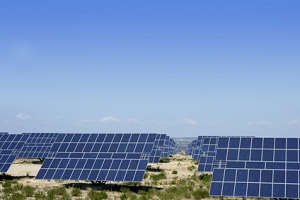APS to more than double amount of new solar in 2013, over record-breaking 2012
 APS, Arizona’s largest utility is on the solar train. The state said it plans to more than double the amount of new solar capacity it brought online in 2012 in 2013. The company said 2013 it plans to bring on 299 megawatts in major projects alone. That’s more than double the 148 megawatt record it set for itself in 2012—and it doesn’t count all the small commercial and residential systems it’s installing throughout the state.
APS, Arizona’s largest utility is on the solar train. The state said it plans to more than double the amount of new solar capacity it brought online in 2012 in 2013. The company said 2013 it plans to bring on 299 megawatts in major projects alone. That’s more than double the 148 megawatt record it set for itself in 2012—and it doesn’t count all the small commercial and residential systems it’s installing throughout the state.
The company is ramping up the amount of solar it has in its portfolio ahead of the state’s renewable portfolio standard requirements. “The state RES is a minimum requirement and targets a specific amount of renewable production by 2025,” said APS Manager of Renewable Energy Greg Bernosky. “Currently APS is far exceeding the incremental annual requirement for renewable energy with approximately 12 percent of retail sales expected from renewable sources by year end 2015.” He said the company is only required to source 5 percent of retail sales from renewables by that time.
“The accelerated amount of renewable energy is a result of APS’s 2009 rate case settlement, which required APS to essentially double the RES-required level of compliance by year-end 2015,” Bernosky said. Many utilities balk at distributed generation and sets limits as to how much distributed generation they’ll accept. Apparently that’s not that case with APS. “APS does not limit the amount of distributed generation that is developed in its service territory. Arizona’s Renewable Energy Standard requires a specific amount of energy be provided through distributed generation each year. Currently, APS is far exceeding the requirements for both residential and business distributed generation installations,” he said.
The utility—or its customers—also is aggressively adding in more distributed generation. In 2012, APS added 83 megawatts of customer-cited generation. “We aim to surpass this number in 2013,” Bernosky said.
One of the issues often cited with distributed generation is how it can affect the grid when there’s too much on it. “The addition of this distributed generation has not caused any immediate technical or system difficulties,” Bernosky said. But the company is now beginning to evaluate how higher levels of distributed generation will affect its grid.
Among the other projects APS plans to bring into its network in 2013 are the 250 megawatt Solana Generating Station and two AZ Sun Projects, the 35 megawatt Foothills Solar Power Plant and the 14 megawatt Hyder II Solar Power Plant.
The additions put the utility well on its way to sourcing 15 percent of its energy from solar and renewables by 2025. “APS will have more than 600 MW of solar on the system by the end of 2013, generating enough electricity to serve 150,000 customers,” said Don Brandt, APS Chairman and CEO.




